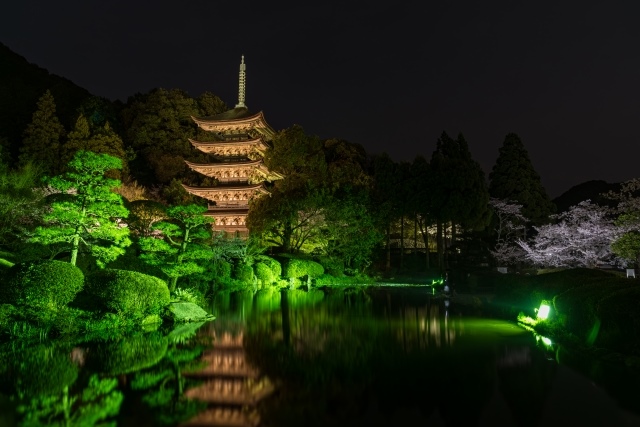Introduction to Instagram-worthy Photos in Yamaguchi Prefecture
Yamaguchi Prefecture is located at the westernmost end of Honshu and was formerly known as Choshu Domain. This region is known for producing many influential figures who played a significant role in the Meiji Restoration, centered around the Shoka Sonjuku academy. It also boasts numerous historical tourist attractions such as Kintai Bridge, Iwakuni Castle, Ruriko Temple, and Hofu Tenmangu Shrine, as well as popular photo spots with beautiful natural scenery like Tsunoshima Bridge, Kanmon Bridge, and the limestone caves of Akiyoshidai.
Kintai Bridge
Kintai Bridge is one of Japan’s three great bridges, with a beautiful five-arch wooden structure measuring about 200 meters in length and 5 meters in width. Built in 1673 during the early Edo period, Kintai Bridge incorporates sophisticated techniques to withstand the flow of the Nishiki River, showcasing the advanced skills of craftsmen through the ages. Despite being washed away several times, it has been rebuilt each time, becoming stronger. The bridge’s design considers ease of walking, with the first arch being gentle and the central three arches having steep curves. Kintai Bridge reflects seasonal beauty, with cherry blossoms in spring, lush greenery in summer, and autumn foliage, offering different landscapes throughout the year.
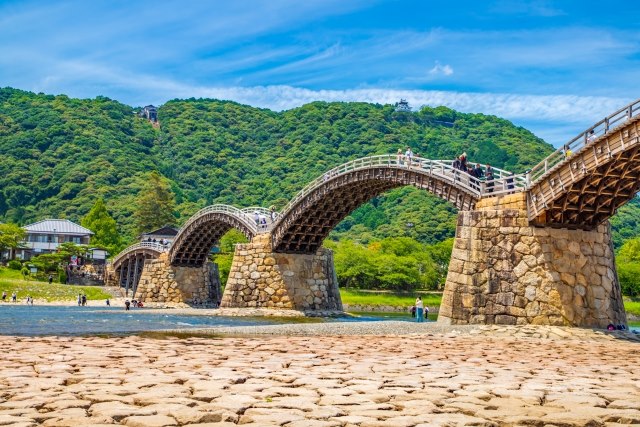
Instagram Worthiness:★★★★★
Photography Opportunity: All seasons
Location Information: ▶Map, Hours, Routes
Transportation Information: 11 minutes by bus from Shin-Iwakuni Station
Iwakuni Castle
Iwakuni Castle, built in 1608 by the first lord of the domain, Yoshikawa, is a Japanese castle located on a mountaintop, utilizing the Nishiki River as a natural moat. Initially, the castle had a beautiful three-layered, four-story structure but was dismantled seven years after its construction by order of the Edo shogunate. The current Iwakuni Castle tower, rebuilt in 1962 with white walls, offers panoramic views of Kintai Bridge and the castle town below, and on clear days, you can see the islands of the Seto Inland Sea and Miyajima. The view of Iwakuni Castle from Kintai Bridge is also beautiful, making it a popular photography spot.
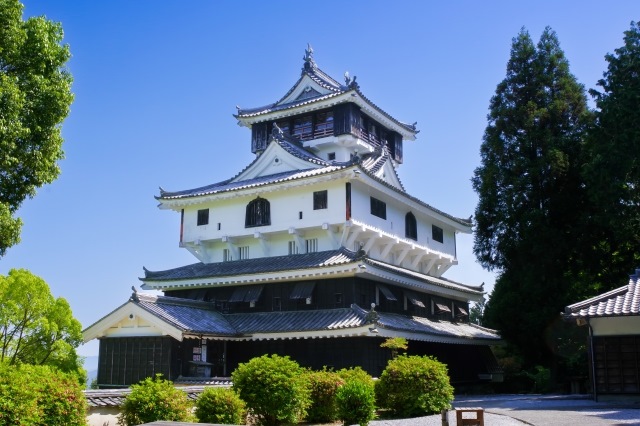
Instagram Worthiness:★★★★★
Photography Opportunity: All seasons
Location Information: ▶Map, Hours, Routes
Transportation Information: 45 minutes on foot from Kintai Bridge
Ruriko Temple
The five-story pagoda of Ruriko Temple, built around 1442 during the Muromachi period, is a historically significant structure highly regarded alongside Kyoto’s Daigoji Temple and Nara’s Horyuji Temple. It is the 10th oldest outdoor five-story pagoda in Japan, showcasing beautiful scenes with seasonal flowers and autumn leaves. Particularly at night, it is illuminated, presenting a more attractive appearance with the surrounding seasonal flowers. This illumination is held from sunset to 22:00 throughout the year. Ruriko Temple is also historically important as a place where samurai from the Satsuma and Choshu domains held secret meetings during the late Edo period.
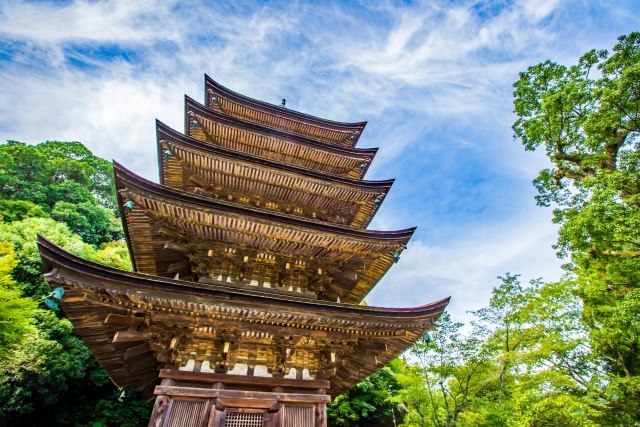
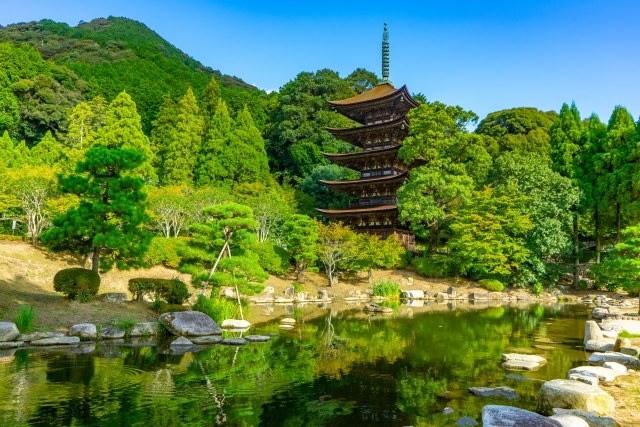
Instagram Worthiness:★★★★★
Photography Opportunity: All seasons
Location Information: ▶Map, Hours, Routes
Transportation Information: 6 minutes by bus from Yamaguchi Station
Hofu Tenmangu Shrine
Hofu Tenmangu Shrine, founded in 904, is a historic shrine known along with Kitano Tenmangu in Kyoto and Dazaifu Tenmangu in Fukuoka as one of Japan’s most important Tenmangu shrines. The shrine is famous for various blessings, particularly for academic success and passing exams, attracting many visitors. Hofu Tenmangu holds numerous events throughout the year, with the New Year’s visit and the festival in November being especially famous. During the plum blossom season, a plum festival is held for about two weeks, delighting visitors.
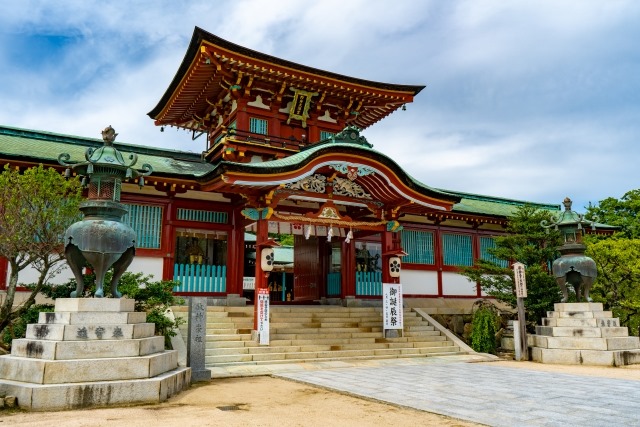
Instagram Worthiness:★★★★★
Photography Opportunity: All seasons
Location Information: ▶Map, Hours, Routes
Transportation Information: 23 minutes on foot from Hofu Station
Shoka Sonjuku
Shoka Sonjuku, located in Hagi City, was a famous private academy led by Yoshida Shoin during the late Edo period. Started by Shoin’s uncle in 1842, the academy was taken over by the 28-year-old Shoin in 1857, significantly contributing to Japan’s modernization. It is known for producing many important figures like Takasugi Shinsaku, Ito Hirobumi, and Yamagata Aritomo. Shoka Sonjuku accepted students regardless of rank or status, conducting education in a small, single-story wooden building. Shoin taught the way of life and thinking through studies, emphasizing debate. Students who studied here later played active roles as loyalists supporting the Meiji Restoration. Shoka Sonjuku is now within the grounds of Shoin Shrine, and the exterior can be freely viewed. The building from the late Edo period is preserved as it was, with photographs of Shoin and those associated with him displayed inside. This academy is considered a highly significant place in Japanese history.
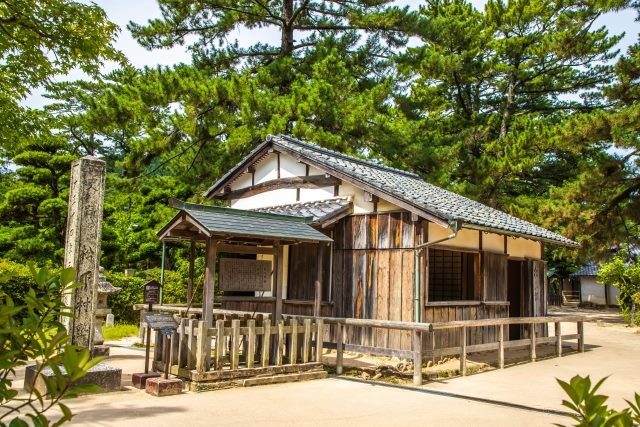
Instagram Worthiness:★★★★★
Photography Opportunity: All seasons
Location Information: ▶Map, Hours, Routes
Transportation Information: 17 minutes on foot from Higashi-Hagi Station
Tsunoshima Bridge
Tsunoshima is a beautiful island located in the northwest of Yamaguchi Prefecture, known for its cobalt blue sea and white sandy beaches. The island’s name comes from the two capes at its ends resembling a cow’s horns. Tsunoshima Bridge is famous for its scenic views, often featured in TV commercials and as a filming location, and has become a popular Instagram-worthy spot in Japan. The bridge is 1,780 meters long, making it one of the longest free public roads in Japan. On Tsunoshima, cycling or walking while enjoying the blue sea is recommended, especially on sunny summer days when the vibrant contrast of the blue sea, white road, and green island makes it an ideal photo spot.
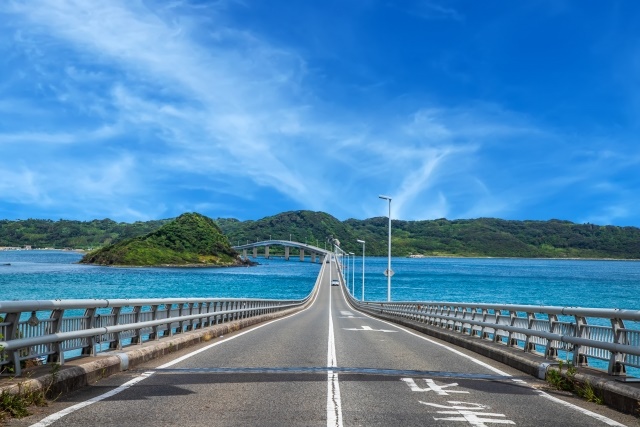
Instagram Worthiness:★★★★★
Photography Opportunity: All seasons
Location Information: ▶Map, Hours, Routes
Transportation Information: 1 hour and 11 minutes by bus from Kawatana Onsen Station
Kanmon Bridge
Kanmon Bridge, spanning the Kanmon Strait to connect Yamaguchi Prefecture on Honshu with Fukuoka Prefecture on Kyushu, is a 1,068-meter-long suspension bridge. When it opened in 1973, it was the longest bridge in Asia. The bridge offers various scenic views, and the “Mekari Promenade” on the Kyushu side provides a perspective looking up at the bridge’s grandeur. The observation deck offers a panoramic view of the Kanmon Strait. At night, illuminated cruise ships pass under the bridge, adding a special charm to the view from the sea. While Kanmon Bridge is a highway and cannot be crossed on foot, the Mekari PA on the Kyushu side is accessible on foot. The bridge is near the historic battle site of Dannoura, allowing visitors to enjoy both the bridge and this historic location. Kanmon Bridge is a place full of attractions with its beautiful scenery and historical background.
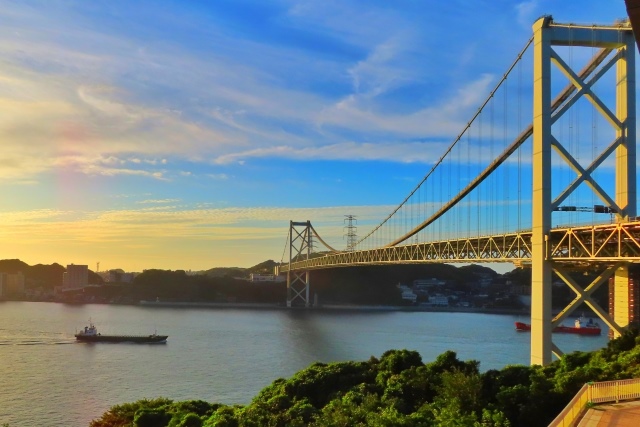
Instagram Worthiness:★★★★★
Photography Opportunity: All seasons
Location Information: ▶Map, Hours, Routes
Transportation Information: 11 minutes by bus from Shimonoseki Station
Akiyoshidai
Akiyoshidai is Japan’s largest karst plateau and one of Japan’s three major karsts. This vast grassland dotted with white limestone creates a landscape resembling a flock of sheep. The terrain was formed from coral reefs that originated in southern seas about 350 million years ago and evolved over a long period. Karst plateaus are created by the erosion of limestone, which is soluble in water, by rainwater and groundwater, and Akiyoshidai has many large limestone caves underground. Among them, “Akiyoshido” is a giant limestone cave with a total length of over 10 km.
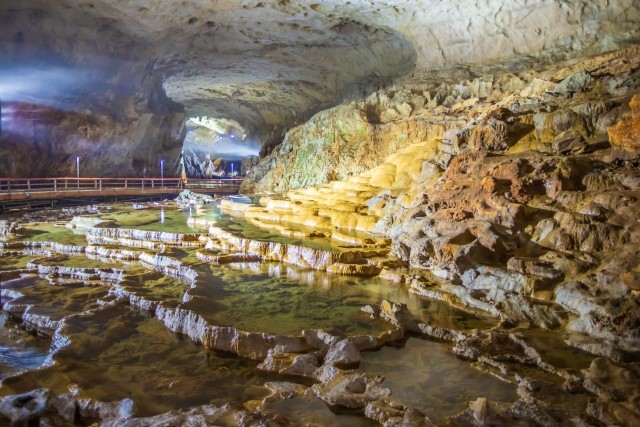
Instagram Worthiness:★★★★★
Photography Opportunity: All seasons
Location Information: ▶Map, Hours, Routes
Transportation Information: 35 minutes by bus from Shin-Yamaguchi Station
